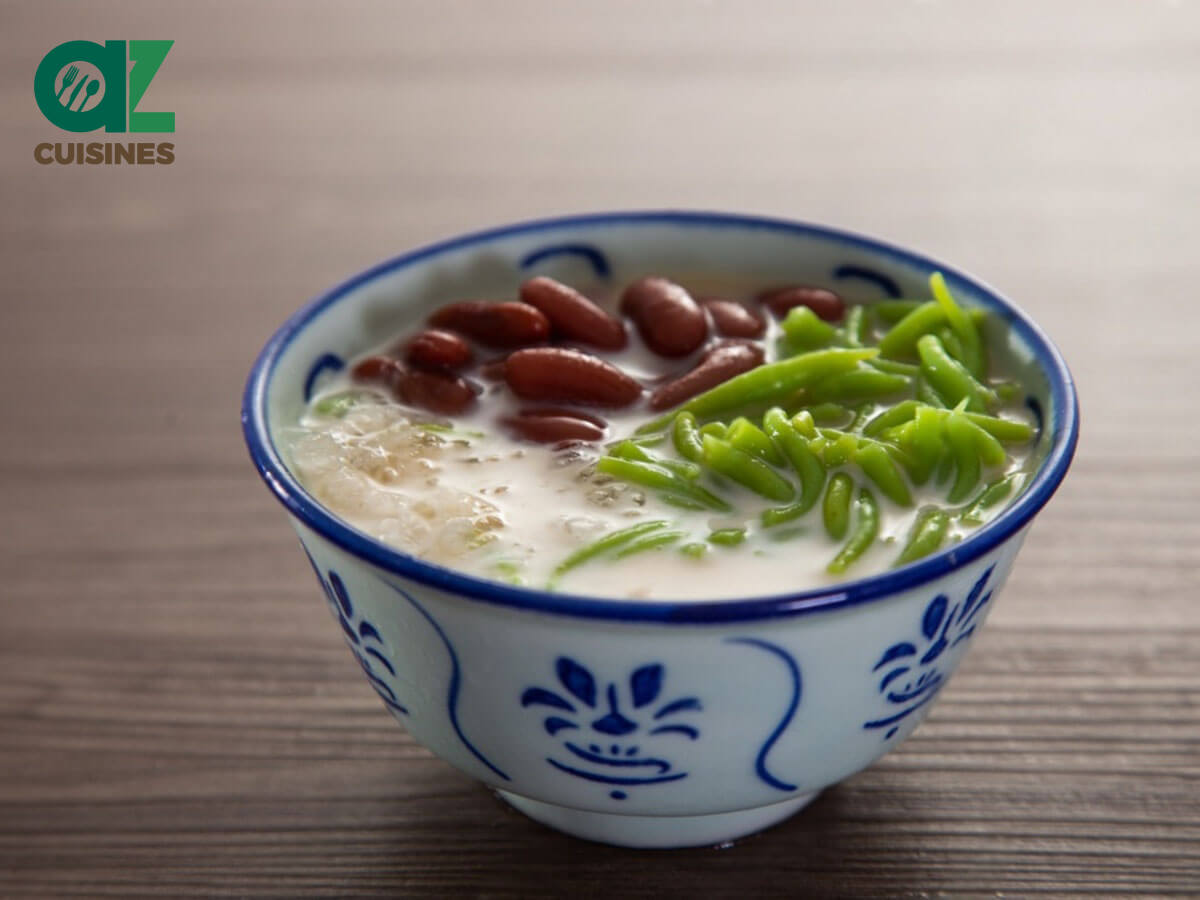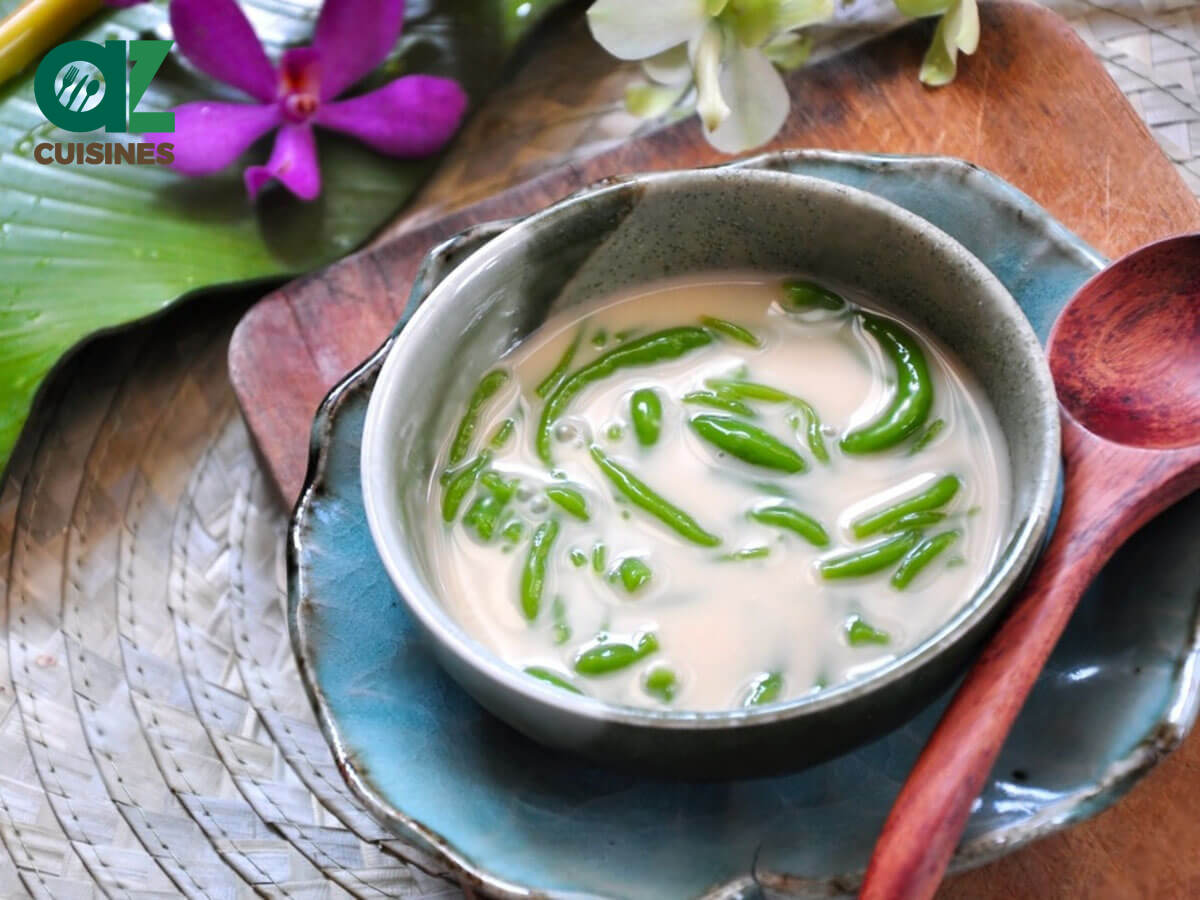Chè Bánh Lọt: Basic Information
Pronunciation
Alternative Name(s)
Dish Type
Course
Mealtime
Popular Variations
- Chè bánh lọt (classic version)
- Chè đậu đỏ bánh lọt (with the addition of adzuki beans)
- Chè bánh lọt đậu xanh (with the addition of mung beans)
- Chè bánh lọt hạt lựu (with the addition of pomegranate seed-like balls)
Chè Bánh Lọt: Ingredients and Preparation
Main Ingredients
Main Cooking Method
Preparation Process
Chè Bánh Lọt: A Deep Dive
Cultural Significance
Taste
Texture
Aroma
Color
Serving Style
Serving Temperature
Accompaniment
Occasions
Seasons
Special Diets
Calories
Popularity
Popular Similar Dishes
- Bubur Cha Cha
- Thapthim Krop
- Halo-halo
- Tong Sui
- Falooda
- Es Teler
Popular Dining Area
Chè bánh lọt, or bánh lọt, is a traditional Vietnamese sweet soup based on cendol, a sweet dessert originating in Indonesia. It is mainly popular in the southern region, especially in Ho Chi Minh City and the Mekong Delta.
Chè bánh lọt consists of green, elongated, jelly-like rice flour jellies served in a sweet broth of coconut milk and sugar with ice.
The jellies, which contain tapioca starch and are colored with pandan juice, are also known as bánh lọt. Palm sugar is the preferred sweetener for this street food.
Many people believe chè bánh lọt was introduced to Vietnam through Thailand, where it is known as lod chong.
The name “bánh lọt” literally means “secreted” or “slipping-through jellies,” referring to the process of running the dough through a perforated cendol press to make the jellies.
Chè bánh lọt sometimes features various additional ingredients, such as split mung beans, adzuki beans, and hạt lựu.
Hạt lựu, literally “pomegranate seeds,” are small, red balls made from tapioca starch or water chestnuts.
There are many other interesting facts about chè bánh lọt waiting for you, such as the pros and cons of this iced dessert. I will also delve into commonly asked questions about chè bánh lọt and recommend similar dishes.
Key Points
Chè Bánh Lọt Images
Pros and Cons of Eating Chè Bánh Lọt
Chè bánh lọt comes with the following strengths and weaknesses.
Pros
Cons
After discussing the upsides and downsides of chè bánh lọt, I will proceed to answer frequently asked questions about this Vietnamese dessert.









Truc Tran (Kris)
Senior Food Editor
Expertise
Home Cooking, Meal Planning, Recipe Development, Baking and Pastry, Food Editor, Cooking-video Maker, Vietnamese Food Evaluation Expert
Education
Truc Tran (Kris), an experienced food writer and editor, is great at exploring and describing global cuisines, from simple street food to fancy dining. In her writing, she skillfully mixes different flavors, cooking methods, and culinary traditions, showing the unique character of various cultures through their food and drinks. On azcuisines.com, Kris highlights her knowledge, especially in Asian cuisine and worldwide traditional dishes.